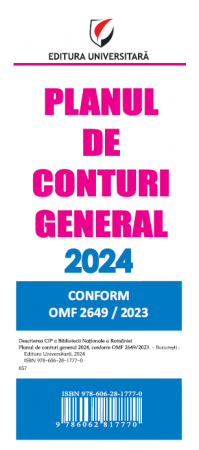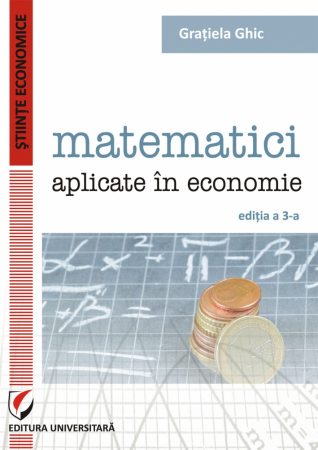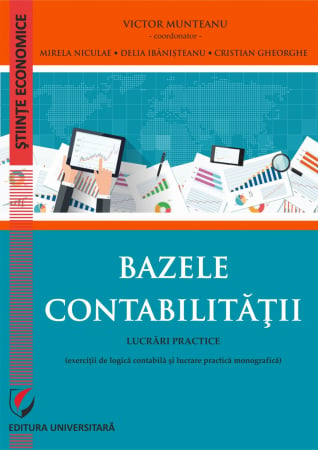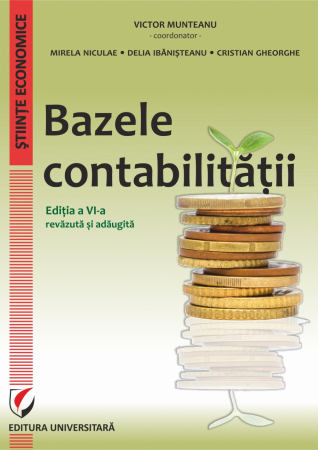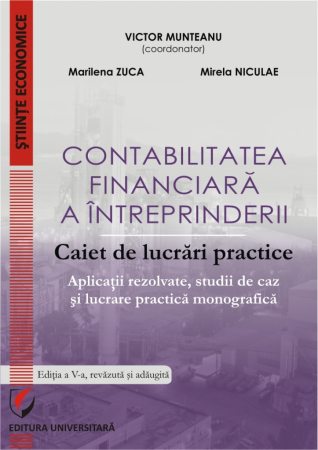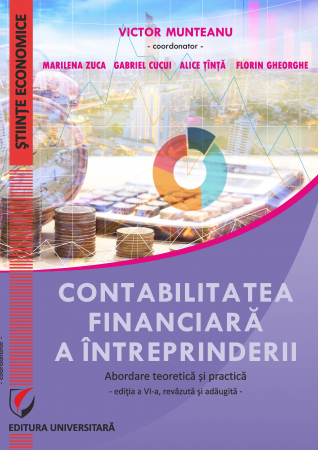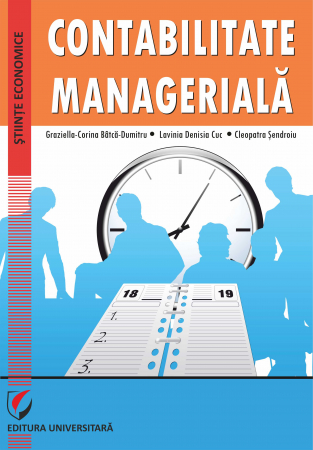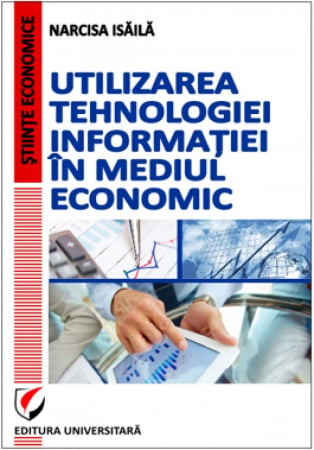Manuscript proposals: [email protected] / 0745 204 115 //// Tracking orders Individuals / Sales: 0745 200 357 / Orders Legal entities: 0721 722 783
Publisher: Editura Universitară
Author: Elena Pelinescu, Marioara Iordan, Mihaela Nona Chilian, Mihaela Simionescu
Pages: 264
Publisher year: 2016
ISBN: 978-606-28-0399-5
DOI: 10.5682/9786062803995
Product Code:
9786062803995
Do you need help?
0745 200 357
- Description
- Download (1)
- Authors
- Content
- More details
- Reviews (0)
Competitiveness is a topic that animates both scientific and political communities in broad and often controversial debates that cover a wide range of economic approaches, from those that originate at the company and industry level, to those that include international trade and , not least of the location, with connections in the cluster theory of M. Porter and the theories of the new economic geography and regional economy, whose origins can be found in the works of P. Krugman.
Competitiveness, approached on different levels that include the microeconomic level - going down to the individual, macroeconomic and regional, is a complex economic phenomenon, with many definitions and methods of quantification derived from these definitions, without being able to speak, yet , by consensus. For this reason, specialists in the field are still looking for a way to ensure a consensus by coagulating the efforts so far, by highlighting both the common issues and those that still raise criticism and wide debate. A slightly broader consensus, both among theorists and policy makers and economic agents involved in practical activity, can be discussed only in terms of the need to gain and maintain competitiveness over various time horizons.
Competitiveness is also one of the central concerns of economic policies concerned with the well-being of nations, because the long-term standard of living of each nation depends on the ability of the national economy to achieve and maintain a high level of productivity in those branches and firms. are competitive in international markets (M. Porter, 1993).
The increasing importance given to the problem of competitiveness can be explained by the economic integration and globalization more and more accentuated, sustained and accelerated economic processes only through a constant increase of the competitive force of all economic entities of a countries, as well as its own.
Approaching competitiveness in this context remains a difficult task, given the multitude of aspects and factors with impact on it. The fiercest criticisms of competitiveness call into question both the validity of the concept as such and its quality of being a major determinant of the functioning of the current world economic system.
Certainly, competitiveness is still a viable concept, which expresses, in a synthetic form, a series of characteristics and features of the contemporary economy, but like other concepts, it is a dynamic concept, strongly influenced by national and global changes. .
Lately, more and more, the issue of competitiveness is being reconsidered, being addressed less in terms of relative costs in a global economy and, increasingly, in terms of capacity to generate innovation by ensuring a combination of the most favorable factors for a sustained, equitable economic growth, based on intangible assets. At the same time, the approach to economic growth has shifted its focus from international trade, as the main engine of economic growth, to innovation systems viewed from the perspective of social, institutional and cultural factors. Moreover, the growth of the knowledge-based economy implies new types of changes in the production structures and in the nature of work, the role of knowledge in the economy being of crucial importance. The most recent trends are towards social competitiveness in a sustainable development, among the elements of which the human factor is the most important determinant of economic growth and well-being, but also the element from the perspective of which all economic performance and policies will be evaluated.
Competitiveness, approached on different levels that include the microeconomic level - going down to the individual, macroeconomic and regional, is a complex economic phenomenon, with many definitions and methods of quantification derived from these definitions, without being able to speak, yet , by consensus. For this reason, specialists in the field are still looking for a way to ensure a consensus by coagulating the efforts so far, by highlighting both the common issues and those that still raise criticism and wide debate. A slightly broader consensus, both among theorists and policy makers and economic agents involved in practical activity, can be discussed only in terms of the need to gain and maintain competitiveness over various time horizons.
Competitiveness is also one of the central concerns of economic policies concerned with the well-being of nations, because the long-term standard of living of each nation depends on the ability of the national economy to achieve and maintain a high level of productivity in those branches and firms. are competitive in international markets (M. Porter, 1993).
The increasing importance given to the problem of competitiveness can be explained by the economic integration and globalization more and more accentuated, sustained and accelerated economic processes only through a constant increase of the competitive force of all economic entities of a countries, as well as its own.
Approaching competitiveness in this context remains a difficult task, given the multitude of aspects and factors with impact on it. The fiercest criticisms of competitiveness call into question both the validity of the concept as such and its quality of being a major determinant of the functioning of the current world economic system.
Certainly, competitiveness is still a viable concept, which expresses, in a synthetic form, a series of characteristics and features of the contemporary economy, but like other concepts, it is a dynamic concept, strongly influenced by national and global changes. .
Lately, more and more, the issue of competitiveness is being reconsidered, being addressed less in terms of relative costs in a global economy and, increasingly, in terms of capacity to generate innovation by ensuring a combination of the most favorable factors for a sustained, equitable economic growth, based on intangible assets. At the same time, the approach to economic growth has shifted its focus from international trade, as the main engine of economic growth, to innovation systems viewed from the perspective of social, institutional and cultural factors. Moreover, the growth of the knowledge-based economy implies new types of changes in the production structures and in the nature of work, the role of knowledge in the economy being of crucial importance. The most recent trends are towards social competitiveness in a sustainable development, among the elements of which the human factor is the most important determinant of economic growth and well-being, but also the element from the perspective of which all economic performance and policies will be evaluated.
-
COMPETITIVITATE - COMPETITIVITATE REGIONALA IN ROMANIA
Download
ELENA PELINESCU
MARIOARA IORDAN
MIHAELA NONA CHILIAN
MIHAELA SIMIONESCU
MARIOARA IORDAN
MIHAELA NONA CHILIAN
MIHAELA SIMIONESCU
SYNTHESIS / 7
INTRODUCTION / 15
PART I. NATIONAL ECONOMIC COMPETITIVENESS / 21
CHAPTER 1. NATIONAL COMPETITIVENESS. CONCEPTUAL ASPECTS AND EMPIRICAL ANALYSIS / 23
1.1. Competitiveness. General approach / 23
1.2. Recent developments of concepts related to competitiveness / 31
1.3. Measuring competitiveness / 34
1.4. Romania 's competitive position worldwide according to global competitiveness indices / 48
1.5. Romania's competitive position within the European Union / 64
Annexes / 67
PART II. REGIONAL ECONOMIC COMPETITIVENESS / 97
CHAPTER 2. REGIONAL COMPETITIVENESS - THEORETICAL ASPECTS / 99
2.1. The concept of regional competitiveness / 99
2.2. Theoretical approaches to regional competitiveness / 102
2.3. Measuring regional competitiveness / 112
CHAPTER 3. ECONOMIC GROWTH AND COMPETITIVENESS / 118
3.1. Short review of literature / 121
3.2. Analysis of the determinants of economic growth at the level of Romanian counties. A panel approach / 125
3.3. Determinants of economic growth in Romania. A panel approach / 135
Annexes / 138
CHAPTER 4. EXTERNAL COMPETITIVENESS OF THE REGIONS AND COUNTIES OF ROMANIA / 159
4.1. Methodological aspects / 161
4.2. Changes in the structure of regional exports / 166
4.3. Competitiveness at county level in Romania / 177
Annexes / 192
BIBLIOGRAPHY / 246
INTRODUCTION / 15
PART I. NATIONAL ECONOMIC COMPETITIVENESS / 21
CHAPTER 1. NATIONAL COMPETITIVENESS. CONCEPTUAL ASPECTS AND EMPIRICAL ANALYSIS / 23
1.1. Competitiveness. General approach / 23
1.2. Recent developments of concepts related to competitiveness / 31
1.3. Measuring competitiveness / 34
1.4. Romania 's competitive position worldwide according to global competitiveness indices / 48
1.5. Romania's competitive position within the European Union / 64
Annexes / 67
PART II. REGIONAL ECONOMIC COMPETITIVENESS / 97
CHAPTER 2. REGIONAL COMPETITIVENESS - THEORETICAL ASPECTS / 99
2.1. The concept of regional competitiveness / 99
2.2. Theoretical approaches to regional competitiveness / 102
2.3. Measuring regional competitiveness / 112
CHAPTER 3. ECONOMIC GROWTH AND COMPETITIVENESS / 118
3.1. Short review of literature / 121
3.2. Analysis of the determinants of economic growth at the level of Romanian counties. A panel approach / 125
3.3. Determinants of economic growth in Romania. A panel approach / 135
Annexes / 138
CHAPTER 4. EXTERNAL COMPETITIVENESS OF THE REGIONS AND COUNTIES OF ROMANIA / 159
4.1. Methodological aspects / 161
4.2. Changes in the structure of regional exports / 166
4.3. Competitiveness at county level in Romania / 177
Annexes / 192
BIBLIOGRAPHY / 246
Competitiveness is a topic that animates both scientific and political communities in broad and often controversial debates that cover a wide range of economic approaches, from those that originate at the company and industry level, to those that include international trade and , not least of the location, with connections in the cluster theory of M. Porter and the theories of the new economic geography and regional economy, whose origins can be found in the works of P. Krugman.
Competitiveness, approached on different levels that include the microeconomic level - going down to the individual, macroeconomic and regional, is a complex economic phenomenon, with many definitions and methods of quantification derived from these definitions, without being able to speak, yet , by consensus. For this reason, specialists in the field are still looking for a way to ensure a consensus by coagulating the efforts so far, by highlighting both the common issues and those that still raise criticism and wide debate. A slightly broader consensus, both among theorists and policy makers and economic agents involved in practical activity, can be discussed only in terms of the need to gain and maintain competitiveness over various time horizons.
Competitiveness is also one of the central concerns of economic policies concerned with the well-being of nations, because the long-term standard of living of each nation depends on the ability of the national economy to achieve and maintain a high level of productivity in those branches and firms. are competitive in international markets (M. Porter, 1993).
The increasing importance given to the problem of competitiveness can be explained by the economic integration and globalization more and more accentuated, sustained and accelerated economic processes only through a constant increase of the competitive force of all economic entities of a countries, as well as its own.
Approaching competitiveness in this context remains a difficult task, given the multitude of aspects and factors with impact on it. The fiercest criticisms of competitiveness call into question both the validity of the concept as such and its quality of being a major determinant of the functioning of the current world economic system.
Certainly, competitiveness is still a viable concept, which expresses, in a synthetic form, a series of characteristics and features of the contemporary economy, but like other concepts, it is a dynamic concept, strongly influenced by national and global changes. .
Lately, more and more, the issue of competitiveness is being reconsidered, being addressed less in terms of relative costs in a global economy and, increasingly, in terms of capacity to generate innovation by ensuring a combination of the most favorable factors for a sustained, equitable economic growth, based on intangible assets. At the same time, the approach to economic growth has shifted its focus from international trade, as the main engine of economic growth, to innovation systems viewed from the perspective of social, institutional and cultural factors. Moreover, the growth of the knowledge-based economy implies new types of changes in the production structures and in the nature of work, the role of knowledge in the economy being of crucial importance. The most recent trends are towards social competitiveness in a sustainable development, among the elements of which the human factor is the most important determinant of economic growth and well-being, but also the element from the perspective of which all economic performance and policies will be evaluated.
The book is structured in two parts and four chapters. The first chapter is dedicated to competitiveness, approached from the macroeconomic perspective at national level, with an incursion regarding the place and position of Romania in the world economy and the European one from the perspective of competitiveness. Based on an extensive bibliographic documentation, the chapter summarizes the research directions of competitiveness as found in the literature, with special emphasis on new approaches to the concept of competitiveness and efforts to quantify this complex economic process. The limitations of different approaches and measurement systems are highlighted in order to provide new future research directions. Romania, part of the general flow of recovery of gaps compared to developed countries, focuses its efforts on increasing competitiveness, the main vulnerabilities in achieving the objectives deriving from insufficient support of the innovation process and its application in the economy, loss of human capital through migration young workforce and, in particular, the other qualified and, a high dropout rate, especially in primary and secondary schools and, last but not least, the inefficiency of spending public funds and the high degree of corruption.
Chapter two is reserved for approaching competitiveness at regional level from a theoretical perspective, given that local factors are important for ensuring an economic environment conducive to increasing the competitiveness of companies in Romania that capitalize mainly on comparative advantages and less competitive ones. As in the case of the general concept of competitiveness, and in the case of regional competitiveness there is no convergence of opinions, a unitary and comprehensive definition, which would capture the whole complexity of the concept of "regional competitiveness". However, the study The Sixth Periodical Report on the Regions presents a potential analysis benchmark suggested by Martin (2003) derived from the determinants of competitiveness at European level: regional competitiveness as an aggregate of firms' competitiveness and as a derivative of macroeconomic competitiveness. The most complete approach to regional competitiveness is, perhaps, that of Barkley (2008) who synthetically describes the concept of regional competitiveness starting from competitiveness in the vision of Porter (1998), of the competitive advantage of Kitson, Martin and Tyler (dec. 2004) and the theory of efficiency X, of Budd and Hirmis (2004). In terms of measuring regional competitiveness, as well as at national level, it is possible by using broad sets of indicators, sometimes aggregated in a composite indicator, able to provide an evolution of the relative position, or by addressing the link between macroeconomic development and the regional or county one within more complex econometric models.
Chapter three deals with regional competitiveness in relation to economic growth, given the most commonly used definition of competitiveness that stipulates ensuring well-being as an objective pursued at national or regional level. The evaluation of the regional competitiveness is made with the help of some models on panel data with fixed effects and of some dynamic models of panel type. The results are interesting and contrary to the expectations of economic theory. Thus, the rate of real GDP in the previous period has a negative impact on the rate of GDP in the current period, probably due to the inclusion in the analyzed period and the years of economic crisis. It is significant, however, that the employment rate has a significant and positive influence on the GDP rate, being therefore a determinant of regional economic growth in Romania. The construction of a cross-section spatial regression model using real GDP rates and employment rates for Romanian counties in 2013 did not lead to valid results, the coefficient for the employment rate not being significantly different from 0 to a significance level of 5 %. However, the use of Moran's index I for the employment rate in 2013 showed a positive value close to 1 (0.8021), indicating a positive and statistically significant spatial autocorrelation, which indicates an agglomeration of counties with similar rate values. employment, ie neighboring counties tend to have close values for the employment rate (high or low).
Chapter four deepens the analysis at the level of Romanian regions and counties using in this sense simpler tools such as the shift-share analysis introduced by Dunn in 1960 and specific competitiveness indicators such as RCA, RCA 1 and RCA 2 and the Michaely indicator (MI ). The application of the shift-share analysis over the period 2005-2013 highlighted the fact that there are no groups of goods for which all regions have registered negative changes compared to the levels of exports in 2005, but there are some groups of goods for which several regions they registered such changes, differentiated by subperiods.
The shift-share breakdown for the period 2005-2013 revealed that the national effect was positive in all regions, although with different magnitudes, signaling that the evolution of domestic exports had a positive influence. Moreover, the data showed that the positive national effect was higher in the period 2009-2013 compared to the period 2005-2008 in all regions in the case of goods groups I, II, IV, VII, IX, XVI and XVII, ie approximately the same groups of goods for which there was a total positive structural change in all regions. The decomposition of the competitive regional effect highlighted the lower share of the regional comparative advantage in relation to the allocation effect in all regions and for all groups of analyzed products (except group V), the greatest influence of the comparative advantage being noticed in the Bucharest regions. Ilfov and West, and the lowest in the South-West Oltenia and North-East regions, accordingly and the share of these regions in the structure of national exports. The analysis of the effects of sectoral mix and competitive change, at the level of the entire analyzed period highlighted product groups for which the sector mix was negative in all regions, but which was compensated for various groups of goods by specific combinations of favorable factors that have led to better export performance in all regions. The results at the level of the regions were also confirmed by the analyzes performed at the level of counties by applying specific competitiveness indicators.
The use of specific indicators RCA, RCA1, RCA2 and MI provided an answer to the question to what extent the participations in the international trade of the counties are advantageous or not, ie the products bring or not a competitive or comparative advantage. The analyzes highlighted the existence of a significant fluctuation from one period to another of the product groups that have a comparative advantage at the county level. However, at the level of each county there is the existence of groups of products that retain their comparative advantage throughout the analyzed period, groups that generally capitalize on natural or comparative potential (low wages, as is the case of light industry groups). The extremely low values of the Michaely indicator indicate a low degree of specialization, the values being close to the level of 0.01-0.05 in most counties. Few counties can mention, according to the values of this indicator, a higher degree of specialization.
Competitiveness, approached on different levels that include the microeconomic level - going down to the individual, macroeconomic and regional, is a complex economic phenomenon, with many definitions and methods of quantification derived from these definitions, without being able to speak, yet , by consensus. For this reason, specialists in the field are still looking for a way to ensure a consensus by coagulating the efforts so far, by highlighting both the common issues and those that still raise criticism and wide debate. A slightly broader consensus, both among theorists and policy makers and economic agents involved in practical activity, can be discussed only in terms of the need to gain and maintain competitiveness over various time horizons.
Competitiveness is also one of the central concerns of economic policies concerned with the well-being of nations, because the long-term standard of living of each nation depends on the ability of the national economy to achieve and maintain a high level of productivity in those branches and firms. are competitive in international markets (M. Porter, 1993).
The increasing importance given to the problem of competitiveness can be explained by the economic integration and globalization more and more accentuated, sustained and accelerated economic processes only through a constant increase of the competitive force of all economic entities of a countries, as well as its own.
Approaching competitiveness in this context remains a difficult task, given the multitude of aspects and factors with impact on it. The fiercest criticisms of competitiveness call into question both the validity of the concept as such and its quality of being a major determinant of the functioning of the current world economic system.
Certainly, competitiveness is still a viable concept, which expresses, in a synthetic form, a series of characteristics and features of the contemporary economy, but like other concepts, it is a dynamic concept, strongly influenced by national and global changes. .
Lately, more and more, the issue of competitiveness is being reconsidered, being addressed less in terms of relative costs in a global economy and, increasingly, in terms of capacity to generate innovation by ensuring a combination of the most favorable factors for a sustained, equitable economic growth, based on intangible assets. At the same time, the approach to economic growth has shifted its focus from international trade, as the main engine of economic growth, to innovation systems viewed from the perspective of social, institutional and cultural factors. Moreover, the growth of the knowledge-based economy implies new types of changes in the production structures and in the nature of work, the role of knowledge in the economy being of crucial importance. The most recent trends are towards social competitiveness in a sustainable development, among the elements of which the human factor is the most important determinant of economic growth and well-being, but also the element from the perspective of which all economic performance and policies will be evaluated.
The book is structured in two parts and four chapters. The first chapter is dedicated to competitiveness, approached from the macroeconomic perspective at national level, with an incursion regarding the place and position of Romania in the world economy and the European one from the perspective of competitiveness. Based on an extensive bibliographic documentation, the chapter summarizes the research directions of competitiveness as found in the literature, with special emphasis on new approaches to the concept of competitiveness and efforts to quantify this complex economic process. The limitations of different approaches and measurement systems are highlighted in order to provide new future research directions. Romania, part of the general flow of recovery of gaps compared to developed countries, focuses its efforts on increasing competitiveness, the main vulnerabilities in achieving the objectives deriving from insufficient support of the innovation process and its application in the economy, loss of human capital through migration young workforce and, in particular, the other qualified and, a high dropout rate, especially in primary and secondary schools and, last but not least, the inefficiency of spending public funds and the high degree of corruption.
Chapter two is reserved for approaching competitiveness at regional level from a theoretical perspective, given that local factors are important for ensuring an economic environment conducive to increasing the competitiveness of companies in Romania that capitalize mainly on comparative advantages and less competitive ones. As in the case of the general concept of competitiveness, and in the case of regional competitiveness there is no convergence of opinions, a unitary and comprehensive definition, which would capture the whole complexity of the concept of "regional competitiveness". However, the study The Sixth Periodical Report on the Regions presents a potential analysis benchmark suggested by Martin (2003) derived from the determinants of competitiveness at European level: regional competitiveness as an aggregate of firms' competitiveness and as a derivative of macroeconomic competitiveness. The most complete approach to regional competitiveness is, perhaps, that of Barkley (2008) who synthetically describes the concept of regional competitiveness starting from competitiveness in the vision of Porter (1998), of the competitive advantage of Kitson, Martin and Tyler (dec. 2004) and the theory of efficiency X, of Budd and Hirmis (2004). In terms of measuring regional competitiveness, as well as at national level, it is possible by using broad sets of indicators, sometimes aggregated in a composite indicator, able to provide an evolution of the relative position, or by addressing the link between macroeconomic development and the regional or county one within more complex econometric models.
Chapter three deals with regional competitiveness in relation to economic growth, given the most commonly used definition of competitiveness that stipulates ensuring well-being as an objective pursued at national or regional level. The evaluation of the regional competitiveness is made with the help of some models on panel data with fixed effects and of some dynamic models of panel type. The results are interesting and contrary to the expectations of economic theory. Thus, the rate of real GDP in the previous period has a negative impact on the rate of GDP in the current period, probably due to the inclusion in the analyzed period and the years of economic crisis. It is significant, however, that the employment rate has a significant and positive influence on the GDP rate, being therefore a determinant of regional economic growth in Romania. The construction of a cross-section spatial regression model using real GDP rates and employment rates for Romanian counties in 2013 did not lead to valid results, the coefficient for the employment rate not being significantly different from 0 to a significance level of 5 %. However, the use of Moran's index I for the employment rate in 2013 showed a positive value close to 1 (0.8021), indicating a positive and statistically significant spatial autocorrelation, which indicates an agglomeration of counties with similar rate values. employment, ie neighboring counties tend to have close values for the employment rate (high or low).
Chapter four deepens the analysis at the level of Romanian regions and counties using in this sense simpler tools such as the shift-share analysis introduced by Dunn in 1960 and specific competitiveness indicators such as RCA, RCA 1 and RCA 2 and the Michaely indicator (MI ). The application of the shift-share analysis over the period 2005-2013 highlighted the fact that there are no groups of goods for which all regions have registered negative changes compared to the levels of exports in 2005, but there are some groups of goods for which several regions they registered such changes, differentiated by subperiods.
The shift-share breakdown for the period 2005-2013 revealed that the national effect was positive in all regions, although with different magnitudes, signaling that the evolution of domestic exports had a positive influence. Moreover, the data showed that the positive national effect was higher in the period 2009-2013 compared to the period 2005-2008 in all regions in the case of goods groups I, II, IV, VII, IX, XVI and XVII, ie approximately the same groups of goods for which there was a total positive structural change in all regions. The decomposition of the competitive regional effect highlighted the lower share of the regional comparative advantage in relation to the allocation effect in all regions and for all groups of analyzed products (except group V), the greatest influence of the comparative advantage being noticed in the Bucharest regions. Ilfov and West, and the lowest in the South-West Oltenia and North-East regions, accordingly and the share of these regions in the structure of national exports. The analysis of the effects of sectoral mix and competitive change, at the level of the entire analyzed period highlighted product groups for which the sector mix was negative in all regions, but which was compensated for various groups of goods by specific combinations of favorable factors that have led to better export performance in all regions. The results at the level of the regions were also confirmed by the analyzes performed at the level of counties by applying specific competitiveness indicators.
The use of specific indicators RCA, RCA1, RCA2 and MI provided an answer to the question to what extent the participations in the international trade of the counties are advantageous or not, ie the products bring or not a competitive or comparative advantage. The analyzes highlighted the existence of a significant fluctuation from one period to another of the product groups that have a comparative advantage at the county level. However, at the level of each county there is the existence of groups of products that retain their comparative advantage throughout the analyzed period, groups that generally capitalize on natural or comparative potential (low wages, as is the case of light industry groups). The extremely low values of the Michaely indicator indicate a low degree of specialization, the values being close to the level of 0.01-0.05 in most counties. Few counties can mention, according to the values of this indicator, a higher degree of specialization.
If you want to express your opinion about this product you can add a review.
write a review

6359.png)
![Competitiveness - Regional competitiveness in Romania [1] Competitiveness - Regional competitiveness in Romania [1]](https://gomagcdn.ro/domains/editurauniversitara.ro/files/product/large/competitivitate-competitivitate-regionala-in-romania-625-352064.jpg)
